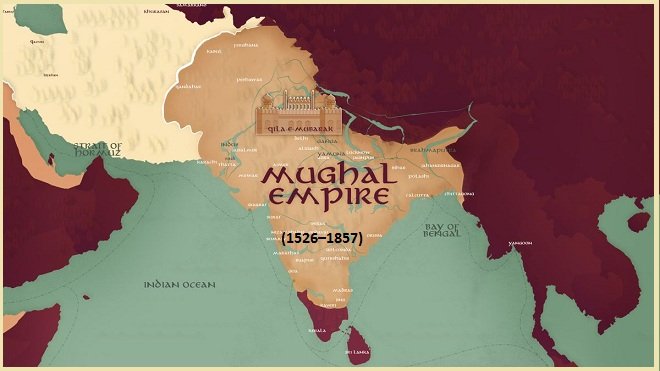Muhammad Shah Mughal Emperor
The Mughal Empire, renowned for its grandeur and historical significance, witnessed one of its most intriguing rulers in Muhammad Shah Mughal emperor. His reign, which spanned from September 27, 1719, to April 26, 1748, was marked by cultural flourishes and political turmoil, making it a pivotal chapter in Indian history. From his full name and background to his handling of rebellions, cultural developments, and invasions, the story of Muhammad Shah is one of brilliance and struggle. Let’s embark on a journey to explore the life and times of this iconic emperor.

Full Name and Background of Muhammad Shah Mughal Emperor
Born on August 7, 1702, Muhammad Shah’s full name was Nasir-ud-Din Muhammad Shah. He was the son of Khujista Akhtar Jahan Shah, a Mughal prince, and grandson of Bahadur Shah I. Ascending the throne on September 27, 1719, at just 17 years of age, Muhammad Shah inherited a fragmented empire rife with political instability.
His early life was spent under the shadow of palace intrigues and power struggles among Mughal nobility. These struggles set the stage for his reign, where diplomacy and resilience became crucial in holding together the vast empire. The young Muhammad Shah Mughal emperor initially appeared to be a promising ruler, but external challenges and internal dissensions tested his mettle.

Rebellious Activities against Muhammad Shah
The early reign of Muhammad Shah Mughal emperor was marred by rebellions and uprisings. The most notable challenge came from the Sayyid Brothers, influential kingmakers who controlled the empire’s politics. Recognizing the threat they posed, Muhammad Shah worked meticulously to weaken their grip.
His resolve to remove the Sayyid Brothers demonstrated his determination to assert authority. These rebellious activities tested the emperor’s ability to navigate complex political landscapes, showcasing both his strengths and limitations as a ruler.
Early Reign: Removing the Sayyid Brothers
The removal of the Sayyid Brothers was a defining moment in the early years of Muhammad Shah Mughal emperor. These brothers, Husain Ali Khan and Abdullah Khan, wielded enormous power during the reign of previous emperors. To free himself from their dominance, Muhammad Shah orchestrated their assassination with the help of loyal allies.
While this bold move temporarily strengthened his authority, it also created a vacuum in the court’s power structure. The ensuing political instability highlighted the precariousness of his position as the ruler of a crumbling empire.
Loss of Deccan Subahs
One of the significant setbacks during the reign of Muhammad Shah Mughal emperor was the loss of the Deccan provinces, or subahs. The Deccan region, rich in resources, was vital to the Mughal economy. However, repeated conflicts with the Marathas, led by figures like Peshwa Baji Rao, resulted in a gradual loss of control.
The emperor’s inability to curb Maratha ambitions underscored the challenges of governing a vast empire with diminishing resources. The loss of Deccan subahs marked a turning point in the empire’s decline, eroding its influence in southern India.

Cultural Developments during Muhammad Shah’s Reign
Despite political setbacks, the reign of Muhammad Shah Mughal emperor is remembered for its cultural achievements.
His court flourished as a center of artistic and scientific pursuits, earning him the nickname “Rangila,” meaning “the colorful.”
Contributions to Arts and Music
Muhammad Shah was a patron of the arts, particularly music and painting. The Mughal miniature painting flourished during his time, reflecting themes of romance, courtly life, and spirituality. Renowned musicians like Sadarang and Adarang enriched Hindustani classical music by introducing new ragas and styles.
Revival of Persian Influence
The emperor also encouraged a revival of Persian literary traditions. Poets like Mir Taqi Mir and Sauda thrived in his court, composing masterpieces that are celebrated to this day.
Scientific Developments under Muhammad Shah
The reign of Muhammad Shah Mughal emperor also saw advancements in astronomy and medicine. The emperor encouraged scholars to study celestial movements, leading to the refinement of astrological instruments.
Muhammad Shah’s interest in knowledge extended to traditional and modern sciences, a rare blend for rulers of his time. This intellectual curiosity cemented his legacy as a culturally enlightened monarch.

Bengal and Sikh Raids
The Mughal Empire faced threats from multiple fronts during Muhammad Shah’s reign. The rise of Bengal’s autonomy under Nawab Alivardi Khan was a significant blow to imperial authority. Similarly, the Sikhs led by Banda Singh Bahadur and later by the Khalsa, conducted raids that destabilized the northern territories.
These challenges revealed the weaknesses of an empire grappling with shifting political realities. Despite his attempts, the emperor often found his resources too limited to effectively address these threats.
Loss of Gujarat and Malwa Subahs
The loss of Gujarat and Malwa subahs further diminished the empire’s territorial control. The Marathas under Peshwa Baji Rao I rapidly expanded their influence, seizing these strategically vital regions.
The inability of Muhammad Shah Mughal emperor to retain these provinces was indicative of the Mughal military’s weakening power. This decline accelerated the fragmentation of the empire, leaving it vulnerable to external invasions.
Invasion of Nader Shah
Perhaps the most catastrophic event during the reign of Muhammad Shah Mughal emperor was the invasion of Nader Shah, the Persian ruler. In 1739, Nader Shah launched a campaign against the Mughal Empire, citing disputes over territories.

Battle of Karnal
The decisive Battle of Karnal on February 24, 1739, saw the Mughal forces suffer a crushing defeat. Nader Shah’s superior tactics and well-trained army easily overwhelmed the Mughal troops.
Sack of Delhi
Following his victory, Nader Shah entered Delhi, unleashing terror upon its citizens.
The sack of Delhi led to a devastating loss of life and wealth. The renowned Peacock Throne, along with other priceless treasures, was looted, marking a deeply humiliating episode in Mughal history.
Later Maratha Wars and Foreign Relations
The aftermath of Nader Shah’s invasion left the Mughal Empire severely weakened. The Marathas capitalized on this vulnerability, escalating their raids and asserting dominance over northern India.
In foreign relations, Muhammad Shah Mughal emperor sought alliances to counterbalance these threats but found limited success. His inability to effectively manage these dynamics highlighted the challenges of ruling a declining empire.

Marriages of Muhammad Shah
The personal life of Muhammad Shah Mughal emperor was as eventful as his political reign.
He established multiple marital alliances with powerful families to reinforce his rule. Among his esteemed queens was Badshah Begum, a woman of remarkable character who had a significant impact on court politics.
Death of Muhammad Shah
After a tumultuous reign lasting nearly 29 years, Muhammad Shah Mughal emperor passed away on April 26, 1748, in Delhi. His death marked the end of an era defined by both cultural brilliance and political decline. He was succeeded by his son Ahmad Shah Bahadur, who inherited an empire in disarray.
Muhammad Shah in Popular Culture
The reign of Muhammad Shah Mughal emperor has been depicted in various forms of popular culture. From historical novels to TV series, his life continues to captivate audiences. His persona as a culturally refined yet politically beleaguered ruler makes him a compelling figure for storytelling.
Conclusion
The story of Muhammad Shah Mughal emperor, from 1719 to 1748, is a testament to the complexities of leadership during challenging times. His reign, while marked by political failures, also showcased remarkable cultural and scientific advancements. From the removal of the Sayyid Brothers to the devastating invasion of Nader Shah, his life was a blend of triumphs and tragedies.
As one of the most discussed rulers of the Mughal dynasty, Muhammad Shah’s legacy continues to inspire both admiration and reflection. His ability to foster cultural growth amidst chaos remains a highlight of his reign, ensuring his place in the annals of history.
Muhammad Shah, the Mughal Emperor, is recorded to have had several children, with four sons being notable in historical accounts. However, among them, the most prominent was Ahmad Shah Bahadur, who succeeded him as the Mughal Emperor. Below are the details:
Sons of Muhammad Shah
Ahmad Shah Bahadur
Born: December 23, 1725
Significance: Ahmad Shah Bahadur ascended the Mughal throne after Muhammad Shah’s death in 1748. His reign was marked by instability and the continued decline of the empire.
Death: January 1, 1775
Mirza Anjum Shikoh
Born: Date unknown (less prominent in history)
Significance: He held no major administrative role and remained in the shadow of his elder brother.
Mirza Shah Shuja
Born: Date unknown
Significance: His life was largely overshadowed by the political challenges of the Mughal Empire during his father’s reign.
Mirza Fakhr-ud-Din
Born: Date unknown
Significance: Like his brothers, Fakhr-ud-Din did not rise to prominence in Mughal politics or administration.
Legacy of His Sons
While Muhammad Shah’s sons were born into royalty, the declining strength of the Mughal Empire left them with little real power. Ahmad Shah Bahadur, the most significant of his heirs, failed to restore the empire’s glory, as his rule was marred by internal conflict and the growing influence of regional powers like the Marathas.
The exact details of the birth and contributions of Muhammad Shah’s lesser-known sons remain sparse, as historical focus often centers on the empire’s political and cultural history rather than the personal lives of all royal offspring.
The exact number and detailed records of the daughters of Muhammad Shah, the Mughal Emperor, are not well-documented in history. While the Mughal princesses often played roles in cultural and courtly matters, their contributions and lives are less highlighted compared to their male counterparts. Here is what is generally known:
Known Daughters of Muhammad Shah
Historical texts and records do not explicitly name all of Muhammad Shah’s daughters or provide comprehensive details about their lives. However, as per Mughal traditions:
Prominent Role in Court Life:
Mughal princesses, including Muhammad Shah’s daughters, were likely involved in the cultural, artistic, and diplomatic activities of the court. They lived within the zenana (women’s quarters) and influenced courtly etiquette and governance indirectly.
Birth and Death Records:
Specific birth and death dates of Muhammad Shah’s daughters remain unrecorded in major historical sources. It was customary for royal daughters to remain in the background of political narratives unless they were married into significant alliances or played notable roles.
General Practices of the Mughal Court
Royal daughters were often married to powerful regional rulers to strengthen political alliances.
They were well-educated, mastering languages, poetry, and arts, reflecting the Mughal emphasis on culture.
While Muhammad Shah’s reign is well-documented for its cultural achievements and political events, details about his daughters remain sparse, emphasizing the need for deeper historical research into the lives of Mughal princesses.
Muhammad Shah, the Mughal Emperor, had several wives, as was customary for royalty of his era. His marriages were often politically motivated, aimed at strengthening alliances and consolidating power. Among his wives, Badshah Begum is the most notable and well-documented. Below is an overview:
Wives of Muhammad Shah
Badshah Begum
Born: Circa 1703
Married to Muhammad Shah: Around 1721
Death: December 14, 1789
Significance: Badshah Begum was a highly influential figure in the Mughal court and remained loyal to Muhammad Shah throughout his reign. She was respected for her intelligence, wisdom, and administrative capabilities.
Udham Bai
Known as: Qudsia Begum after becoming the Empress
Role: Udham Bai was the mother of Ahmad Shah Bahadur, who succeeded Muhammad Shah. She rose to prominence as one of his favored wives.
Other Wives
Muhammad Shah likely had several other wives and concubines, as was typical for Mughal emperors. However, specific details about their lives, contributions, and deaths are not well-documented in historical sources.
Legacy of His Wives
Muhammad Shah’s wives, especially Badshah Begum and Udham Bai, played key roles in supporting his reign. Badshah Begum, in particular, remained an important figure in Mughal history for her loyalty and influence in the empire’s later years.
While the exact number of Muhammad Shah’s wives is not clear, their presence in the royal court reflects the political and cultural dynamics of the Mughal era.










